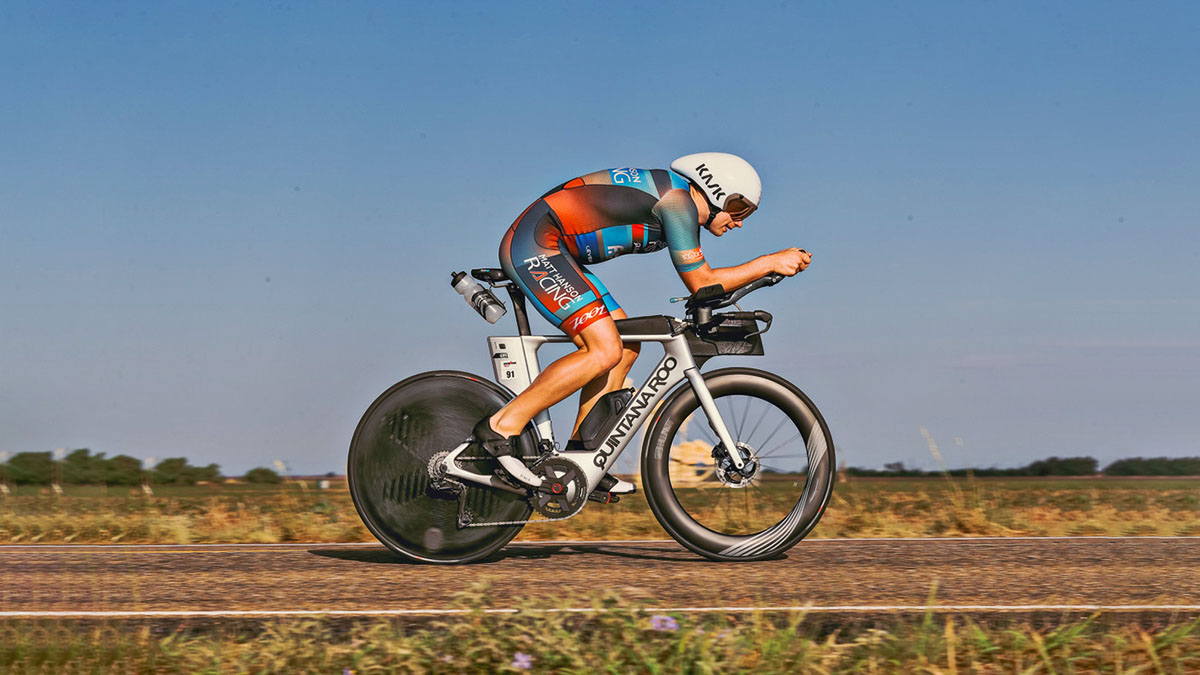For the triathlon, cycling or running newbie, it can be quite overwhelming seeing fellow training buddies carrying what appears to be a utility belt equipped with a diverse line-up of nutritional tools. Well, fret no more. This article provides a platform for the ingredients recommended for optimal energy levels and peak performance during endurance training and racing.
Carbohydrates
Put simply, carbohydrates are sugars and starches that fuel our bodies much like gasoline fuels a race car. Each gram of carbohydrate contains ~4 calories worth of fuel. Just like a race car stores its fuel in a tank, the human body stores carbohydrates as glycogen in both our muscles and liver. These glycogen reserves are relied upon to stabilize blood sugars and allow for optimal muscle function. Runners who balance out their meal plates with 45-65% carbohydrate while meeting daily energy demands can expect to store about 2 grams (8 calories) of glycogen per pound of muscle tissue and an additional ~100-125 grams (400-500 calories) within the liver. This amount of glycogen supplies the energy needed to run for ~2 hours at a moderate intensity, making addition of carbohydrates necessary during long run efforts to avoid depletion and consequent dizziness (aka “bonking”) and profound muscle fatigue (aka “the wall”).
How many carbohydrates do you need?
Race Week: If you are gearing up for a race that lasts longer than 3 hours, enhance carbohydrate stores pre-race, aka “loading”, by incorporating 4-5 grams of easy-to-digest (low fiber) carbohydrate per pound of lean body weight each day the final 72 hours leading up to race day. A single-day or 48-hour carbo-loading protocol may be effective for shorter races, especially if the athlete is training through the race meaning no reduction in training volume is being implemented pre-race. Sample easy-to-digest carbohydrate options include pretzels, plain bagels, bananas, white pasta, white rice, potato, rice-based cereals, sports drinks, and energy bars.
Race Morning: Aim for 100-150 grams of easy-to-digest (low fiber) carbohydrate in the 2-3 hours leading up to race start. Be sure to allow 1 hour digestion time for every 200-300 calories consume. A sample pre-race meal to be consumed in the 2- 3 hours leading up to race start would be a plain bagel topped with a smear of peanut butter and honey plus 20-24 ounces of sports drink.
During Race: Aim for approximately ¼-1/3 your body weight (lbs) in grams each hour of training or racing beyond 45-90 minutes. For example, an 180-lb runner should aim for ~45-60 grams of carbohydrate each hour of training or racing. To maximize carbohydrate uptake into the muscles and extend endurance, choose products whose ingredient lists include multiple types of carbohydrate. Common carbohydrate sources used in sports foods include maltodextrin, glucose or dextrose, sucrose, and fructose. Common products used on race day include sports drinks, energy gels, energy bars, and energy chews.
Post-Race: Aim for 50-100 grams of carbohydrate, preferably in liquid form to promote rehydration as well as carbohydrate repletion, as soon as possible upon finishing a hard workout or race effort.
Protein
Scientifically speaking, proteins are large, complex molecules that make up 20% of our body weight in the form of muscle, bone, cartilage, skin, as well as other tissues and body fluids. During digestion, protein is broken down into at least 100 individual chemical building blocks known as amino acids that form a little pool within our liver and are used to build muscle, skin, hair, nails, eyes, hormones, enzymes, antibodies, and nerve chemicals. Some research has found that inclusion of small amounts of protein during prolonged activity can help enhance performance by sparing muscle glycogen as well as aiding fluid uptake. Protein also can help mute hunger that arises during longer efforts. Be careful about overdoing protein, however, as large amounts slow gastric emptying and can precipitate a “backlog” of nutrients of gut and consequent stomach distress and muscle fatigue/cramping.
How much protein do you need?
In Training: It is estimated that endurance athletes require approximately 1/2 -3/4 gram of protein per pound of lean body mass daily. Athletes on restrictive energy intakes should aim for the high end of this recommendation. For example, a 180 lb man with 10% body fat carries ~160-lbs of lean body mass and thus requires a range of ~80-120 grams of protein each day.
Race Morning: Include 10-20 grams of protein in the 2-3 hour leading up to race start to help stabilize blood sugars. Common pre-race protein sources include peanut butter, non-fat milk or yogurt, eggs, and energy bars.
During Race: If out on a training or race course longer than 4 hours, aim for up to 5 grams of protein hourly. Common sources include sports drinks, energy bars, as well as whole food alternatives like turkey jerky and peanut butter sandwiches.
Post-Race: A range of 10-20 grams of protein taken immediately post-race is sufficient to support muscle repair and immune function post-event. Common sources include milk, meal replacement shakes, and specialized recovery sports drinks.
Electrolytes
Replacement of electrolytes becomes instrumental in endurance bouts lasting longer than 1 hour, especially when training and racing in hot and humid conditions. The principle electrolytes include sodium (generally bound to chloride), potassium, magnesium, and calcium. These electrolytes are involved in metabolic activities and are essential to the normal function of all cells, including muscle function. An electrolyte imbalance has reported symptoms similar to dehydration: nausea, vomiting, muscle weakness, muscle cramping, muscle twitching, overall fatigue, labored breathing, “pins and needles”, and confusion.
How many electrolytes do you need?
Pre-Race: Athletes vulnerable to muscle cramping and fatigue as well as those competing in heat may benefit from increasing salt intake in the few days leading up to race day. Many of the carbo-loading options, such as pretzels, sports drinks, breads, and cereals, accommodate this. Similarly, on race morning, choosing saltier carbohydrate sources, such as a salt bagel, and sipping on a sports drink rather than plain water may help. Salt loading is not recommended for athletes on blood pressure medications.
During Race: Aim for 200-500 mg of sodium per standard bike bottle of water consumed (20-24 ounces) as well as smaller amounts of potassium, magnesium, and calcium. Note that too much sodium can lead to bloating and GI discomfort so be sure to account for all your sources, including sports drinks (100-200 mg per 8 oz), energy gels (25-200 mg per packet) and chews (20-210 mg per 3 pieces), salt packets (~200 mg per packet), and electrolyte capsules (~100-200 mg per capsule).
Post-Race: Sipping on a sports drink, rather than plain water, post-race will facilitate optimal rehydration of muscles, including replacement of lost electrolytes.
Water
Because water serves as the medium for all metabolic activity, helps to lubricate our muscles and joints, and also keeps our core body temperature in check, failure to take in enough fluids during a long run can have a dramatic negative impact on both health and performance. Therefore, determination of sweat rate and consequent fluid demands is extremely important for athletes. Practice weighing in pre- and post-workout and drink fluids so that no more than 2% of your body weight is lost during training and racing efforts.
How much water do you need to drink?
Daily: Drink half your body weight (in pounds) in fluid ounces or so urine runs pale yellow during the day. For example, a 150-lb man requires approximately 75 ounces of fluid daily.
Pre-Race: It is not uncommon to lose 1-2% of your body water weight overnight (one reason why so many like to weigh themselves in the morning). Unfortunately, this level of dehydration can have significant negative consequences on performance so be sure to sip on 16-24 ounces of fluid in the 1-2 hours leading up to race start or so that urine runs pale yellow.
During-Race: Aim for ½-1 liter or approximately 1 standard bike bottle (~20-24 ounces) per hour or so that urine runs pale yellow. It is important to note that over-hydration, also known as hyponatremia, can be just as dangerous as dehydration and is generally caused by consuming fluids, especially water, beyond that of what the body can absorb. Cardinal symptoms of over- hydration include clear urine, pressure headaches, nausea, vomiting, and confusion. To monitor hydration status, weigh in pre- and post-workout. The target is to stay within 2% of your pre-workout weight.
Post-Race: If you have lost more than 2% of your pre-workout weight during a workout or race, sip on fluids until urine runs pale yellow again. It is estimated that one needs approximately 20 ounces of fluid to replenish 1-lb of body weight.
Extra Credit Ingredient: Caffeine
A central nervous system stimulant, caffeine may help maintain blood glucose concentration and reduce power loss through its effects on the active musculature and nervous system that reduce fatigue and perceptions of effort, discomfort, and pain. Specific flavors of energy gels and chews are caffeinated at a dose of 25-50 mg pack. It is important to experiment with personal tolerance to caffeine as some athletes do not respond favorably to caffeine with symptoms such as a racing heart beat, muscle twitching, stomach distress, and anxiety serving as reason for avoidance.
How much caffeine should you consume?
Aim for 100-300 mg of caffeine (e.g., 1-3 cups of coffee) in the 2-3 hours leading up to race start and another 25-50 mg of caffeine taken hourly or implemented during the later stages of a race. Avoid consuming more than 500 mg of caffeine on race day. For best results, consider eliminating caffeine from the diet for 10 days prior to racing.







